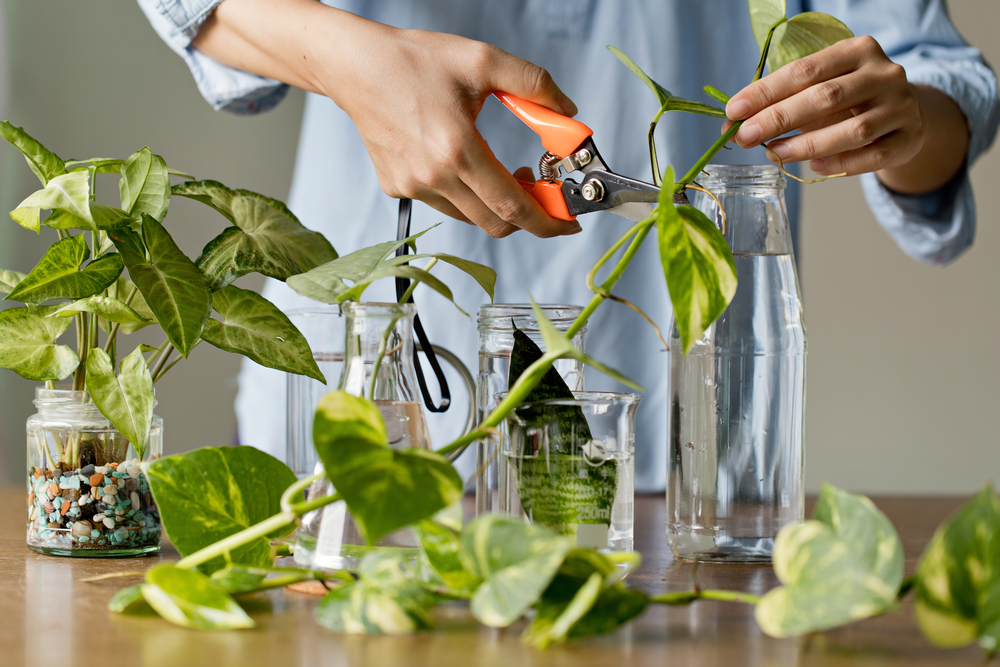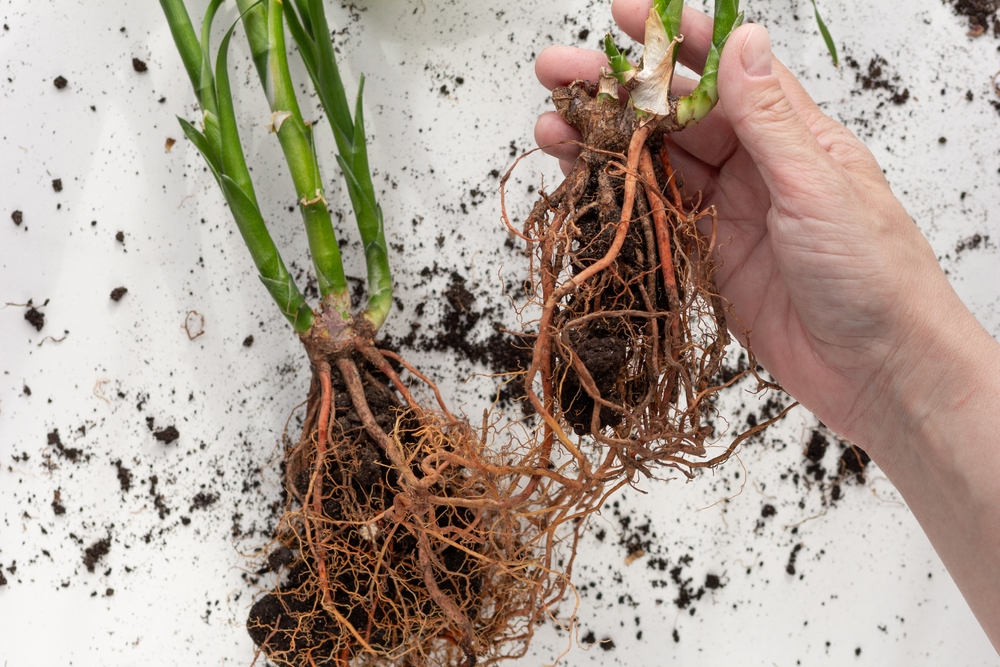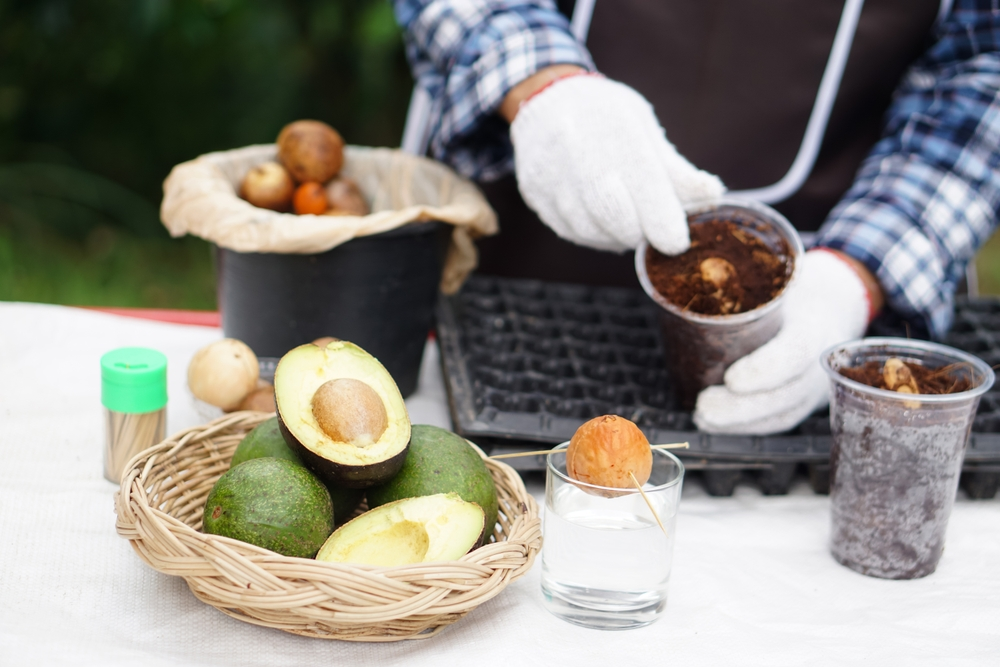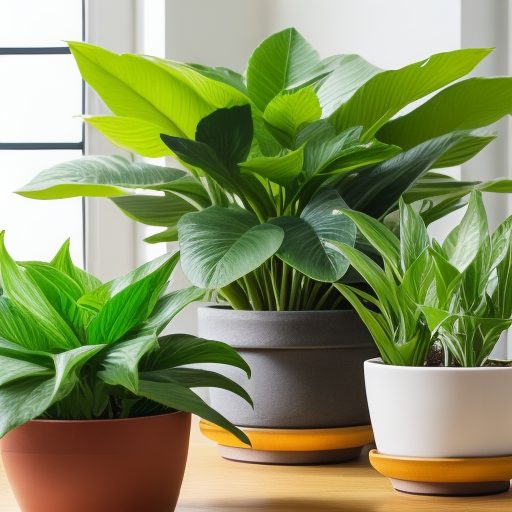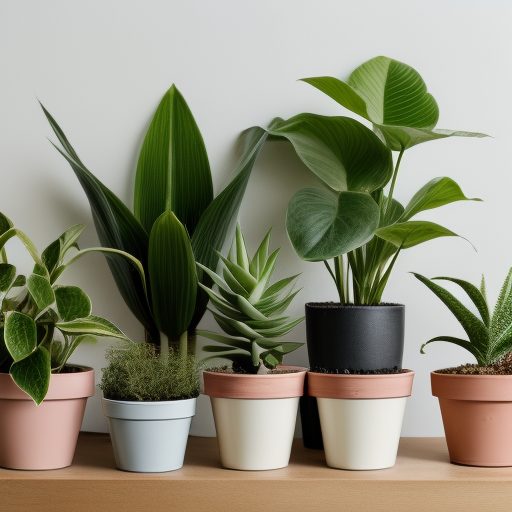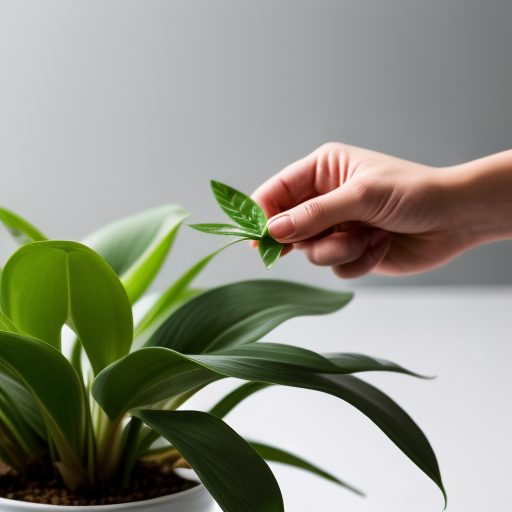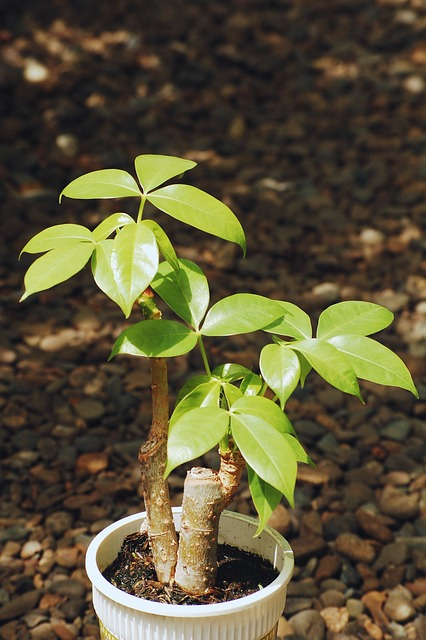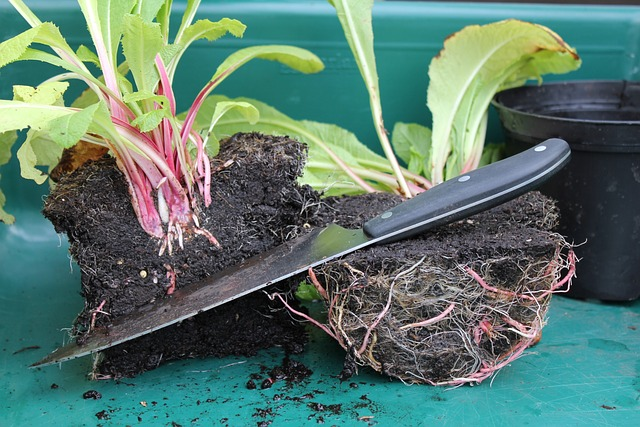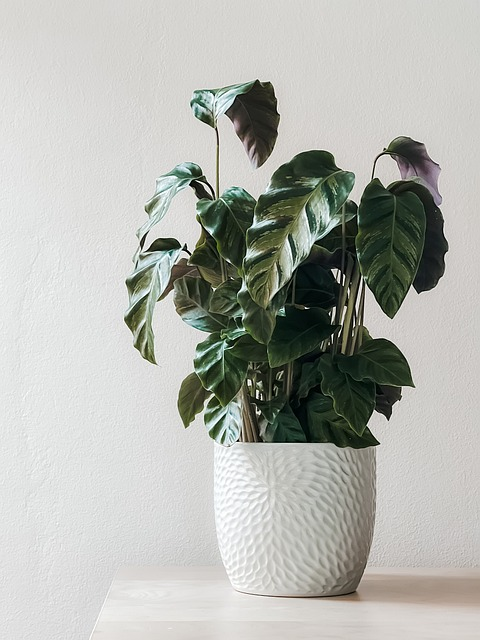HousePlantJoy is supported by our audience. When you purchase through one of our links, we may earn a small affiliate commission. As an Amazon Associate I earn from qualifying purchases. Your cost is not affected.
==================
If you love houseplants, you might try to propagate them at some point. Propagating houseplants is a great way to multiply your collection, share with friends, or save a dying plant. But it’s not always easy or successful. There are many common mistakes and problems when propagating houseplants. These can be prevent your cuttings from rooting, growing, or thriving. In this article, we explore some of these issues and how to avoid or fix them. Whether you are a beginner or an expert, you will find some useful tips and tricks to propagate your houseplants like a pro.
Avoiding Green Thumb Blunders
Successfully Propagating Houseplants
Hello, fellow indoor gardeners! Today, we’ll dive into the beautiful world of houseplant propagation. It’s an art, a science, and sometimes, a mystery. Propagation can be an excellent way to expand your indoor garden but can also invite many challenges. Growing new plants from cuttings or seeds is more complex than it might seem. And as we all know, even the slightest misstep sometimes leads to disappointment.
Learn to Propagate Plants Successfully
This guide will explore common mistakes and problems when propagating houseplants and how to avoid them. We’ll discuss the basics of propagation, common issues indoor gardeners face and aim, and provide solutions to these problems. This comprehensive guide aims to support you on your journey to becoming a more skilled and confident indoor gardener.
Our goal is to provide you with the knowledge and tools necessary to propagate your houseplants successfully. So, please grab a cup of your favorite beverage, get comfortable, and dive into this green thumb adventure.
Understanding the Basics of Propagating Indoor Plants
Before we discuss the common mistakes when propagating houseplants, it’s crucial to understand the basics first. Propagation involves the process of creating a new plant from the parts of an existing one. This can be done through various methods including cuttings, division, layering, and seeds.
Cuttings are perhaps the most popular method of propagating indoor plants. This involves taking a piece of the parent plant, usually a stem or leaf, and placing it in water or soil to form roots.
Division, on the other hand, involves splitting a larger plant into several smaller ones.
Layering is a technique where a branch is bent and covered with soil to encourage new root growth.
Finally, seeds, as we all know, are the start of a new plant’s life cycle.
However, each of these methods has its own set of challenges. From choosing the right cutting to understanding the best conditions for root growth, there’s a lot to consider.
Which Method to Use to Propagate Plants Successfully?
Some propagation methods work better with certain plants. Using the right method helps avoid mistakes that lead to poor growth or complete failures.
12 Houseplants That You Can Easily Propagate from Cuttings
Pothos (Epipremnum Aureum)
This is one of the most popular and easy houseplants to propagate. You can simply cut a stem with at least 4 to 5 leaves and place it in water or soil. It will develop roots in a few weeks.
Spider Plant (Chlorophytum Comosum)
This plant produces tiny spider-like plantlets at the end of its long leaves. You can either pot them without separating them from the main plant or cut them off and plant them directly in soil.
Snake Plant (Dracaena Trifasciata)
This plant has striking sword-shaped leaves that can be propagated by cutting them into sections and planting them in moist soil. Make sure to keep the orientation of the leaf the same as it was on the mother plant.
Jade Plant (Crassula Ovata)
This succulent has thick fleshy leaves that can be easily rooted by removing them from the stem and placing them on top of moist soil. You can also cut a stem with several leaves and plant it in soil.
Heartleaf Philodendron (Philodendron Hederaceum)
This is a trailing plant with heart-shaped leaves that can be propagated by cutting a stem with at least one node and placing it in water or soil. It will root quickly and produce new growth.
English Ivy (Hedera Helix)
This is a climbing plant with variegated leaves that can be propagated by cutting a stem with several nodes and placing it in water or soil. It will root easily and grow into a new plant.
Nerve Plant (Fittonia albivenis)
This is a low-growing plant with colorful veins on its leaves that can be propagated by cutting a stem with at least one node and placing it in water or soil. It will root in a few weeks and produce new leaves.
Chinese Money Plant (Pilea Peperomioides)
This is a trendy plant with round coin-like leaves that can be propagated by removing one of its pups or baby plants that grow from the base of the mother plant. You can pot the pup directly in soil and water it well.
African Violet (Saintpaulia)
This is a flowering plant with fuzzy leaves that can be propagated by cutting a leaf with some stem attached and inserting it into moist soil. It will root in about a month and produce new plants.
ZZ Plant (Zamioculcas Zamiifolia)
This is a hardy plant with glossy green leaves that can be propagated by cutting a leaf or a stem and planting it in moist soil. It will take several months to root and grow, so be patient.
Peperomia
This is a diverse group of plants with various shapes and colors of leaves that can be propagated by cutting a leaf or a stem and placing it in water or soil. It will root in about a month and produce new plants.
Begonia
This is another diverse group of plants with beautiful flowers and foliage that can be propagated by cutting a leaf or a stem and placing it on moist soil. It will root in about two months and produce new plants.
Layering Involves Rooting a Stem While It is Still Attached to the Parent Plant.
There are different types of layering, such as simple, tip, compound, mound, and air layering. Some plants can be easily propagated by layering, while others may require more skill and patience. Here is a list of some houseplants that you can easily propagate by layering:
Pothos (Epipremnum Aureum)
Spider Plant (Chlorophytum Comosum)
This plant produces tiny spider-like plantlets at the end of its long leaves. You can either pot them without separating them from the main plant or cut them off and plant them directly in soil.
Snake Plant (Dracaena Trifasciata)
Jade Plant (Crassula Ovata)
This succulent has thick fleshy leaves that can be easily rooted by removing them from the stem and placing them on top of moist soil. You can also cut a stem with several leaves and plant it in soil.
Heartleaf Philodendron (Philodendron Hederaceum)
English Ivy (Hedera Helix)
Nerve Plant (Fittonia albivenis)
Chinese Money Plant (Pilea Peperomioides)
This is a trendy plant with round coin-like leaves that can be propagated by removing one of its pups or baby plants that grow from the base of the mother plant. You can pot the pup directly in soil and water it well.
African Violet (Saintpaulia)
This is a flowering plant with fuzzy leaves that can be propagated by leaf cuttings or mound layering, which involves clipping the main stem down to the ground and covering it. The buds at the end of the stem will form into a number of rooted branches.
ZZ Plant (Zamioculcas Zamiifolia)
Peperomia
Begonia
Root Division Involves Separating a Plant into Two or More Parts, Each with Its Own Roots and Shoots.
It is a simple and effective way to multiply your houseplants, especially if they have become overcrowded or leggy. Here is a list of some houseplants that you can easily propagate through root division:
Aglaonema (Chinese Evergreen)
This is a low-maintenance plant with colorful and patterned leaves. You can propagate it by gently pulling apart the root ball into smaller sections, each with at least one stem and several roots. Pot them in fresh soil and water well.
Asparagus Fern
This is a fluffy plant with feathery foliage that can grow in bright or low light. You can propagate it by dividing the root ball into smaller clumps, each with some stems and roots. Plant them in well-drained soil and keep them moist.
Pilea Peperomioides (Chinese Money Plant)
This is a trendy plant with round coin-like leaves that can be propagated by removing one of its pups or baby plants that grow from the base of the mother plant. You can pot the pup directly in soil and water it well.
Snake Plant (Dracaena Trifasciata)
This is a hardy plant with striking sword-shaped leaves that can be propagated by cutting the rhizome (the thick underground stem) into sections, each with at least one leaf and some roots. Plant them in well-draining soil and water sparingly.
Spider Plant (Chlorophytum Comosum)
This plant produces tiny spider-like plantlets at the end of its long leaves. You can either pot them without separating them from the main plant or cut them off and plant them directly in soil.
Some Houseplants are Easier to Propagate from Seeds Than Others.
Here is a list of some houseplants that are best propagated from seed, along with some tips on how to grow them:
Peace Lily (Spathiphyllum Wallisii)
This plant offers beautiful white bracts over contrasting dark glossy green foliage. You can sow the seeds at any time of the year. The seed pods turn yellow and soften when they are about to mature.
Asparagus Fern (Asparagus Setaceus)
This plant has fluffy foliage that can grow in bright or low light. You can soak the seeds overnight in water and sow them 1/2 inch deep in a tray or pots. Keep the temperature at 70-80 F until germination, which will take about four weeks.
English Ivy (Hedera Helix)
This plant has variegated leaves that can climb or trail. You can put the seeds in the middle of every section in a seed tray. Push them gently, and don’t cover too much. Keep the soil moist but not soggy until the seedlings emerge.
Living Stone (Lithops)
This plant has succulent leaves that resemble stones or pebbles. You can sow the seeds on top of moist sand or cactus mix. Cover the container with plastic wrap and place it in a bright spot. Keep the soil slightly moist until germination, which will take two to ten weeks.
Cat Grass (Avena Sativa)
This plant is a type of oat grass that cats love to nibble on. You can sow the seeds in a shallow container with potting soil. Water well and place it in a sunny spot. The grass will sprout in a few days and grow up to six inches tall.
I hope this list helps you to expand your houseplant collection. Happy propagating!
Common Mistakes When Propagating Houseplants
Now, let’s discuss some of the common mistakes when propagating houseplants. One of the most common errors is not understanding the specific needs of the plant. Not all plants propagate in the same way. Some prefer water, while others need soil. Some plants prefer stem cuttings, while others propagate best from leaves.
Growing Healthy Plants
Another common mistake is not taking care of the cutting properly. This can include everything from not providing the right temperature and lighting conditions to overwatering or underwatering the plant. Additionally, many indoor gardeners fail to properly sterilize their tools before making a cutting, which can introduce diseases to the plant.
Finally, impatience is a common mistake many indoor gardeners make. Propagation takes time, and it’s important to give the plant the space and time it needs to grow.
Problems Encountered When Propagating Houseplants
Along with mistakes, there are several problems propagating houseplants that indoor gardeners often encounter. One of the most common is root rot, which occurs when the roots of a plant become waterlogged and begin to decay. This can be caused by overwatering or poor drainage.
Plants Fail to Produce Roots
Another common problem is a lack of root growth. This can be due to various factors, such as not taking a good cutting, not providing the right conditions, or using the wrong propagation method.
Other problems include disease and pest infestation. These can cause damage to both the parent plant and the cutting, making successful propagation more difficult.
How to Avoid Mistakes When Propagating Indoor Plants
To avoid the common mistakes when propagating indoor plants, first do your research. Learn about the specific propagation needs of the plant you want to grow. This includes understanding the best propagation method, the ideal conditions for growth, and how to care for the cutting.
Keep it clean when taking cuttings.
Ensure to sterilize your tools before making a cutting to prevent the spread of disease. This can be done by simply washing them with soapy water and then wiping them down with alcohol.
Lastly, practice patience. Remember that propagation is a process that takes time. Don’t rush it. Give your plant the time it needs to grow and develop.
Solutions to Problems Propagating Indoor Plants
When faced with problems propagating indoor plants, it’s important to act fast. For root rot, decrease watering frequency and ensure your plant has good drainage. If the problem persists, you may need to repot the plant in fresh, well-draining soil.
Encourage Root Growth
For a lack of root growth, reassess the conditions you’re providing. Ensure the cutting has enough light and warmth. If the cutting is in water, try changing the water more frequently. If it’s in soil, try increasing humidity.
For diseases and pests, isolation is key. Remove the affected plant from the rest of your indoor garden to prevent spread. Depending on the issue, you may need to prune affected areas or use a natural or chemical treatment.
Advanced Tips for Propagating Houseplants
Once you’ve mastered the basics and know how to troubleshoot common problems, you can start exploring more advanced propagation techniques. For example, you could try air layering, a technique that allows you to grow roots on a plant while it’s still attached to the parent plant.
You could also experiment with different types of propagation media, such as perlite, vermiculite, or coir. Each of these has its own advantages and can support healthy root growth in different ways.
Resources to Improve Your Green Thumb Skills
There are many resources available to help you improve your green thumb skills and avoid common mistakes and problems when propagating houseplants. These include gardening books, online forums, and social media groups where you can connect with other indoor gardeners and share tips and tricks.
There are also numerous online courses and webinars available that can provide you with more in-depth knowledge and hands-on experience.
How to Overcome Problems Propagating Houseplants
Overcoming problems propagating houseplants often involves a bit of trial and error. Don’t be discouraged if your first few attempts at propagation don’t go as planned. Each failure is an opportunity to learn and improve.
Remember to be patient, keep learning, and don’t be afraid to ask for help. With time and experience, you’ll become more adept at propagating your houseplants and expanding your indoor garden.
Embrace Mistakes and Grow Your Indoor Garden
Propagation is a rewarding but challenging aspect of indoor gardening. It’s normal to encounter these common mistakes and problems when propagating houseplants. The key is to learn from these experiences and keep trying.
Embrace the mistakes, learn from the problems, and continue to grow your indoor garden. With patience, perseverance, and a bit of green thumb magic, you’ll be able to propagate your houseplants successfully and enjoy the fruits of your labor. Happy propagating, fellow gardeners!
FAQs
Why are my houseplants’ leaves turning yellow?
How often should I water my houseplants?
My plant isn’t growing. What am I doing wrong?
Learn More About Propagating Houseplants!
Discover the various ways of propagating houseplants! Join us on Facebook, Instagram, and Twitter for beautiful photos, plant care tips, and a community that celebrates the joy of indoor gardening.
Facebook: https://www.facebook.com/houseplantjoyblog
Instagram: http://instagram.com/houseplantjoy20
Twitter: https://twitter.com/HouseplantJoy
Let’s nurture our green spaces together!

